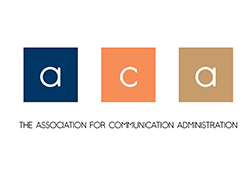Abstract
This article explores the history, the present, and the future of educational assessment in the U.S. to enable readers working with communication assessment issues to make more informed decisions. The time frame illustrates the evolving narrative of education. This narrative not only presents assessment as part of our educational life-story, it also functions to continually create our educational reality -- a reality that includes assessment. As educators, we have an obligation to participate in the ongoing development of this narrative to shape the future of education. The assessment movement was born in the middle 1970s, and many people thought it would be simply another one of those passing educational fads. In fact, some people still think so. But communication assessment has developed and matured over the past two decades and become institutionalized at virtually every level of education. State legislatures mandate it, accrediting bodies require it, professional educational associations support it, and teachers have begun to think it is a good idea for their students. According to the National Communication Association, the purpose of the assessment process is to develop a tool or measurement device which, when applied, evaluates what we are intending to assess. This basic definition provides a clue as to why assessment has become institutionalized: assessment is the process by which we know if we are actually doing what we intend to do in the classroom and in our educational programs. Readers can readily see the appeal of assessment to members of state legislatures. Assessment has become institutionalized, and that raises questions as to the development and future of assessment in the communication discipline.
Recommended Citation
Backlund, P., & Arneson, P. (2000). Educational assessment grows Up: Looking toward the future. Journal of the Association for Communication Administration, 29(1), 88–102.


